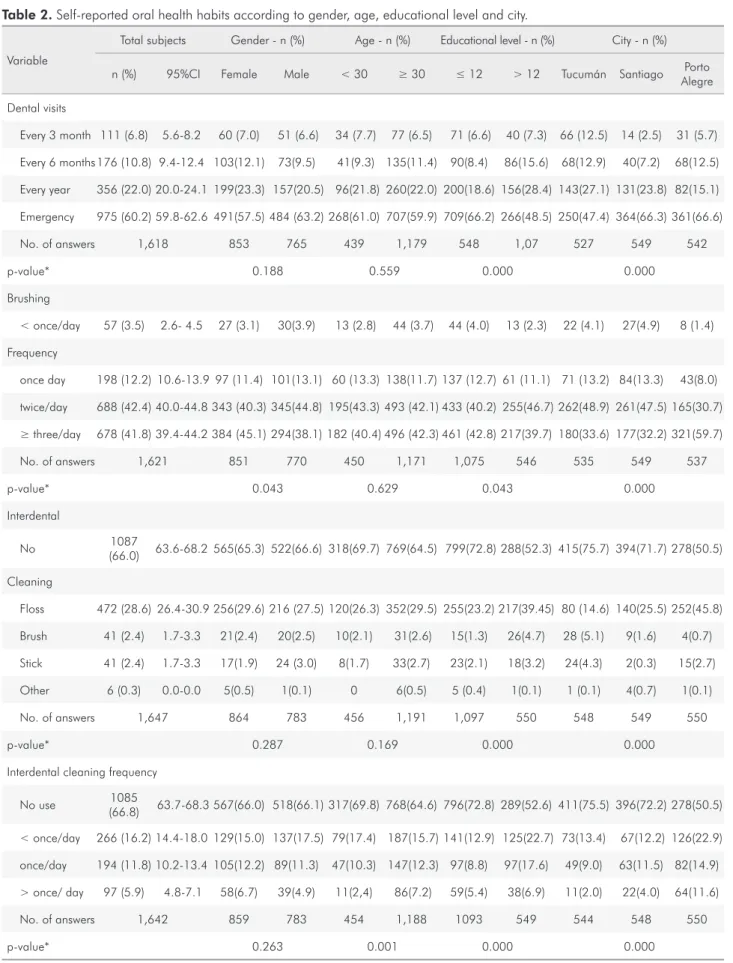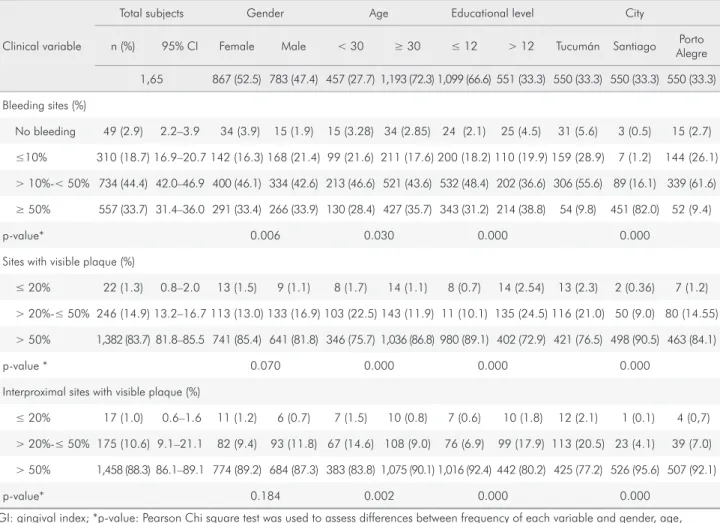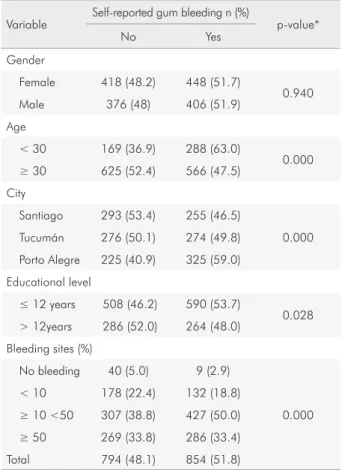A multicenter study of oral health behavior among adult subjects from three South American cities
Texto
Imagem




Documentos relacionados
The questionnaire was composed of both closed and open-ended questions. The irst few questions were inten- ded to characterize the pharmaceutical establishment and consisted of
A semi-structured questionnaire was used to characterize the sociodemographic, health, and weight training profiles of the sample, which consisted of questions related to
Data collection tool was a structured questionnaire with 21 closed questions with multiple choices and three open ques- tions about professionals characteristics (category, time of
The principal objective of our study was to develop a self- administered questionnaire of oral health and oral hygiene habits for patients undergoing general anaesthesia and vali-
Both questionnaires objectively addressed questions related to oral health (knowledge of oral alterations during pregnancy; influence of oral diseases during pregnancy); level
(1) the right to the city and distinct urban agendas – Healthy Cities, Sustainable Cities, Smart Cities and Educational Cities – and their interconnections with the right to
Objetivou-se, no presente trabalho, avaliar a metodologia de separação por cluster levando em consideração o desempenho de grupos de propriedades rurais em relação às BPAs no
The following variables were selected for the study: biological (gender, age); socio-behavioral and demographic (sexual behavior, marital status, level of education, city